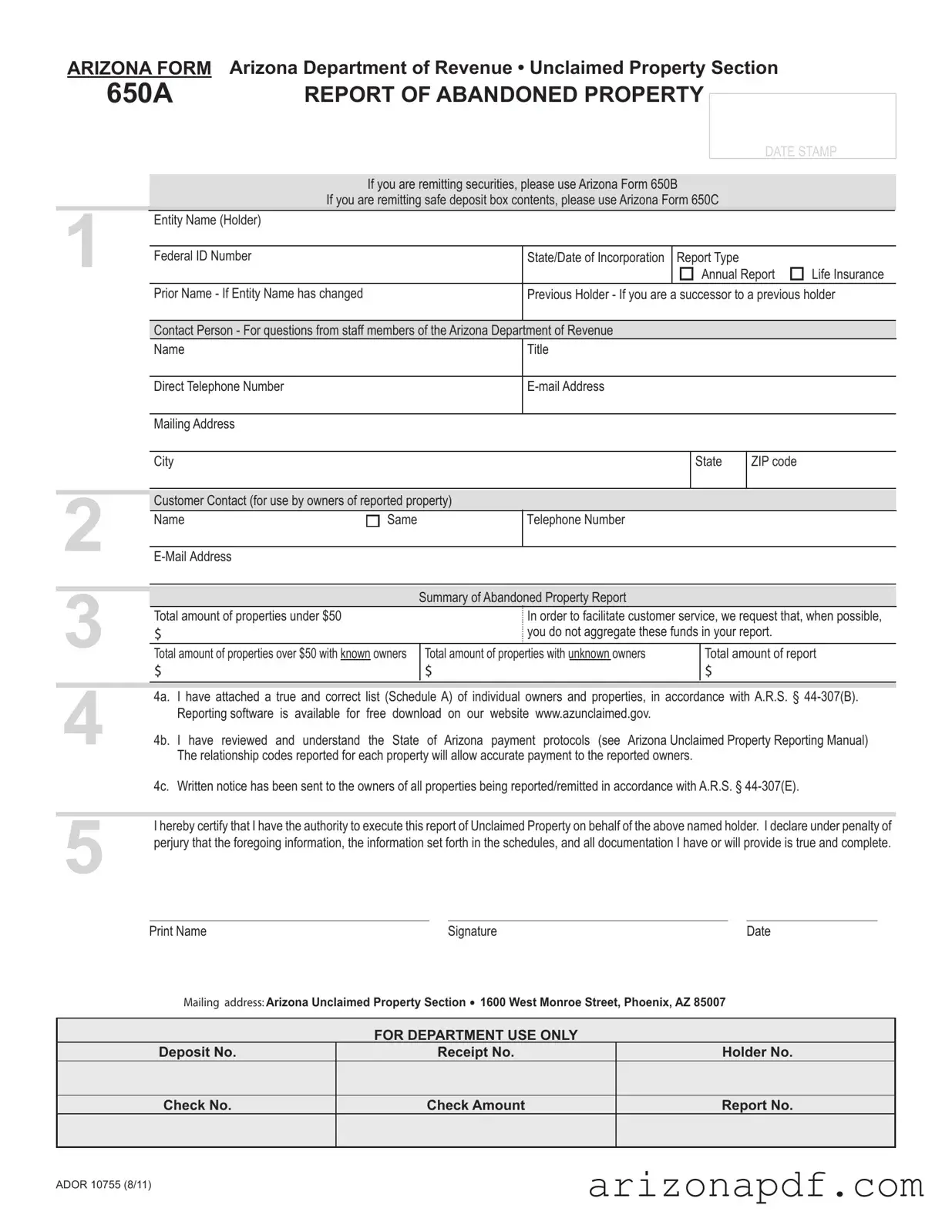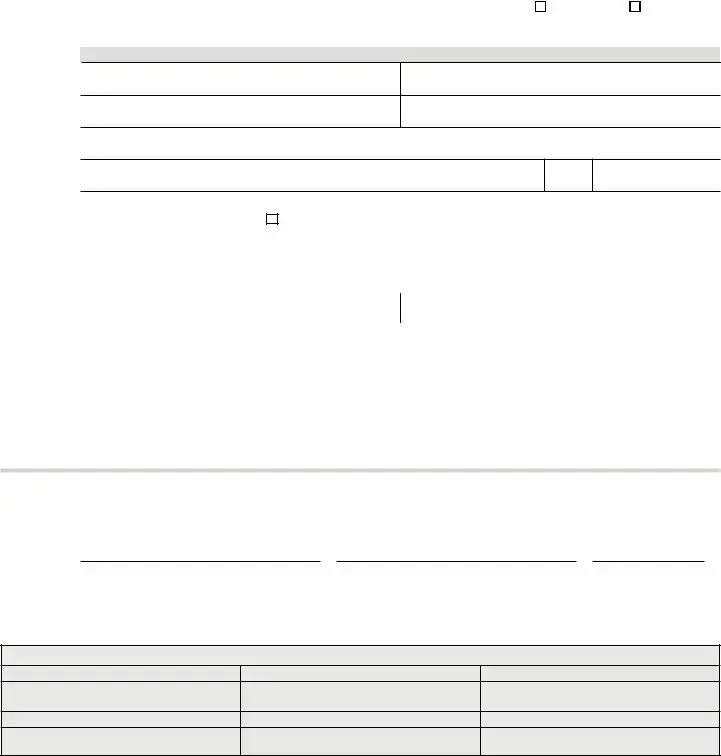The Arizona 650A form, focusing on the report of abandoned property, bears similarities with various other documents required by different entities, both within and outside of Arizona. These documents share common goals such as reporting, compliance, and record-keeping, albeit in different contexts. Let's explore eight such documents and how they relate to the Arizona 650A form.
The California Unclaimed Property Report is a document that serves a similar purpose to the Arizona 650A form. Like its Arizona counterpart, it is used by holders to report unclaimed property to the state. Both documents require information on the entity reporting the unclaimed property, details about the property, and the presumed owners. They are integral to the respective states' efforts to reunite lost or forgotten property with its rightful owners.
The IRS Form 990, while primarily a tax document for nonprofit organizations, shares the reporting and compliance nature of the Arizona 650A form. Both documents require detailed record-keeping and accuracy in reporting financial information. Where the 650A form focuses on unclaimed property, Form 990 provides the IRS with a comprehensive overview of a nonprofit's operations, including its income, expenditures, and charitable activities.
The Uniform Commercial Code (UCC) Financing Statement, often filed with a state's secretary of state, has similarities to the 650A in that it deals with the declaration of certain types of property. While the UCC form is used to announce a security interest in personal property to alert potential creditors, the 650A reports unclaimed property to the state. Both forms play crucial roles in the management and awareness of property rights.
A security deposit return letter, which landlords provide to tenants, can draw a parallel with the 650A form in terms of dealing with property (in this case, money) that may be owed to another party. Both documents involve the process of identifying, documenting, and taking action to return property to its rightful owner, though in very different legal contexts.
The FDIC's Unclaimed Funds form, used to report unclaimed funds from failed financial institutions, serves a purpose analogous to the Arizona 650A form, focusing on a specific type of property: money in accounts of closed banks. Each document aids in the process of ensuring that unclaimed funds are reported and eventually returned to the rightful owners, reflecting a shared interest in financial propriety and consumer protection.
The Missing Participant Form from the Pension Benefit Guaranty Corporation (PBGC) is tasked with the reporting of unclaimed pension benefits, paralleling the intent behind the Arizona 650A form. Both documents address the necessity of reporting property that is no longer within the active control of its owner but has not yet been reunited with them, whether it be pension benefits or other types of property.
The Securities and Exchange Commission (SEC) Lost Securityholder Search Report, another comparative document, requires reporting on securities and shareholders that are unaccounted for. Much like the Arizona 650A form, it involves the identification, reporting, and eventual reuniting of property (in this case, securities) with the rightful owners, focusing on maintaining integrity and trust in the financial markets.
Lastly, the Bank Secrecy Act (BSA) Currency Transaction Report (CTR) shares the broader theme of reporting financial information to authorities, similar to the 650A form's objective with unclaimed property. While the CTR focuses on large transactions that might signal illegal activity, both forms are essential tools in the framework of regulatory compliance and monitoring financial transactions within their respective spheres.


 1600 West Monroe Street, Phoenix, AZ 85007
1600 West Monroe Street, Phoenix, AZ 85007